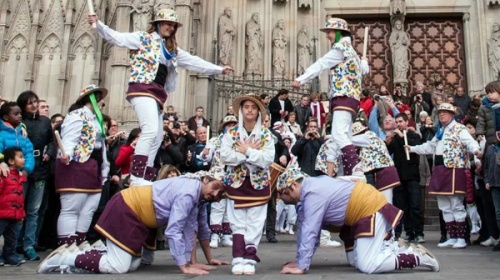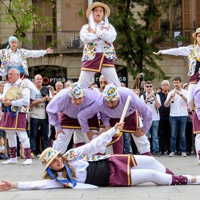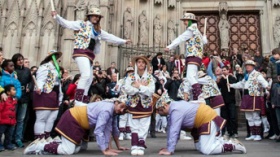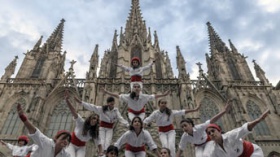Moixiganga
What we understand by moixiganga today, in a general sense, is a dance performance including gymnastic exercises and human constructions that represent scenes from Christ's Passion, although they can represent other themes as well.
You can find this type of moixiganga in Valls, Reus, Vilafranca, Sitges, Torredembarra, Badalona and Tarragona, for example. Tarragona also has one that narrates the most significant episodes from the life of Santa Tecla. In Lleida, on the other hand, despite its religious origins, the moixiganga has taken on a more festive and fun character.
It seems this tradition originated in Valencia, where its highest expression can still be found: the Muixeranga of Algemesí, which was declared a part of the Intangible Cultural Heritage of Humanity in 2011.
Some people believe that the moixiganga spread to certain parts of the south of Catalonia, where it was called the ball de valencians, the dance of the Valencians, and there it evolved into the castells we know today.
It did not exist and was unknown in Barcelona, apart from performances by visiting moixiganguers, until the Santa Eulalia festival in 2014, when the Barcelona colla presented it to the public.








